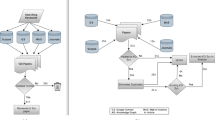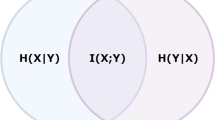Abstract
Relation extraction refers to a method of efficiently detecting and identifying predefined semantic relationships within a set of entities in text documents. Numerous relation extractionfc techniques have been developed thus far, owing to their innate importance in the domain of information extraction and text mining. The majority of the relation extraction methods proposed to date is based on a supervised learning method requiring the use of learning collections; such learning methods can be classified into feature-based, semi-supervised, and kernel-based techniques. Among these methods, a case analysis on a kernel-based relation extraction method, considered the most successful of the three approaches, is carried out in this paper. Although some previous survey papers on this topic have been published, they failed to select the most essential of the currently available kernel-based relation extraction approaches or provide an in-depth comparative analysis of them. Unlike existing case studies, the study described in this paper is based on a close analysis of the operation principles and individual characteristics of five vital representative kernel-based relation extraction methods. In addition, we present deep comparative analysis results of these methods. In addition, for further research on kernel-based relation extraction with an even higher performance and for general high-level kernel studies for linguistic processing and text mining, some additional approaches including feature-based methods based on various criteria are introduced.













Similar content being viewed by others
Notes
Defense Advanced Research Projects Agency of the U.S.
National Institute of Standards and Technology of the U.S.
Dependency grammar relation, parse tree, etc. between words in a sentence.
Binary classification for identifying the possible relation between two named entities.
Relation extraction for all instances with relations shown in the relation identification results.
References
ACE, “Automatic Content Extraction,” 2009. [Online]. Available: http://www.itl.nist.gov/iad/mig//tests/ace/.
Agichtein E, and Gravano L (2000) “Snowball: extracting relations from large plain-text collections,” in Proceedings of the fifth ACM conference on Digital libraries, pp. 85–94.
Aone C, and Ramos-Santacruz M (2000) “REES: a large-scale relation and event extraction system,” in The 6th Applied Natural Language Processing Conference
Bach N, and Badaskar S (2007) “A survey on relation extraction,” Literature review for Language and Statistics II
Brin S (1999) Extracting patterns and relations from the World Wide Web. Lect Notes Comput Sci 1590/1999:172–183
Bunescu R, and Mooney RJ (2005) “A shortest path dependency kernel for relation extraction,” in Proceedings of the Human Language Technology Conference and Conference on Empirical Methods in Natural Language Processing, pp. 724–731
Bunescu R, and Mooney RJ (2006) “Subsequence kernels for relation extraction,” in Proceeding of the Ninth Conference on Natural Language Learning (CoNLL-2005)
Charniak E (2001) “Immediate-head parsing for language models,” in Proceedings of the 39th Annual Meeting of the Association for Computational Linguistics
Choi S-P, Jeong C-H, Choi Y-S, Myaeng S-H (2009) Relation extraction based on extended composite kernel using flat lexical features. J KIISE: Softw Appl 36:8
Collins M (1997) “Three generative, lexicalised models for statistical parsing,” in Proceedings of the 35th Annual Meeting of the ACL (jointly with the 8th Conference of the EACL), Madrid
Collins M, and Duffy N (2001) “Convolution kernels for natural language,” in NIPS-2001
Cortes C, Vapnik V (1995) Support-vector networks. Mach Learn 20(3):273–297
Cristianini N, and Shawe-Taylor J (2000) An introduction to support vector machines and other kernel-based learning methods. Cambridge University Press
Culotta A, and Sorensen J (2004) “Dependency tree kernels for relation extraction,” in Proceedings of the 42nd Annual Meeting on Association for Computational Linguistics
Etzioni O, Cafarella M, Downey D, Popescu A-M, Shaked T, Soderland S, Weld DS, Yates A (2005) Unsupervised named-entity extraction from the Web: an experimental study. Artif Intell 165(1):91–134
Fellbaum C (1998) WordNet: an electronic lexical database. MIT Press, Cambridge
Freund Y, Schapire RE (1999) Large margin classification using the perceptron algorithm. Mach Learn 37(3):277–296
Fundel K, Küffner R, Zimmer R (2007) RelEx—Relation extraction using dependency parse trees. Bioinformatics 23(3):365–371
Gartner T, Flach P, and Wrobel S (2003) “On graph kernels: hardness results and efficient alternatives,” Learning Theory and Kernel Machines, pp. 129–143
Hockenmaier J, and Steedman M (2002) “Generative models for statistical parsing with combinatory categorial grammar,” in Proceedings of 40th Annual Meeting of the Association for Computational Linguistics, Philadelphia, PA
Jiang J, and Zhai C (2007) “A systematic exploration of the feature space for relation extraction,” in NAACL HLT
Joachims T (1998) “Text categorization with support vecor machine: learning with many relevant features,” in ECML-1998
Kambhatla N (2004) “Combining lexical, syntactic and semantic features with Maximum Entropy models for extracting relations,” in ACL-2004
Li J, Zhang Z, Li X, Chen H (2008) Kernel-based learning for biomedical relation extraction. J Am Soc Inf Sci Technol 59(5):756–769
Li W, Zhang P, Wei F, Hou Y, and Lu Q (2008) “A novel feature-based approach to Chinese entity relation extraction,” in Proceedings of the 46th Annual Meeting of the Association for Computational Linguistics on Human Language Technologies: Short Papers, pp. 89–92
Lodhi H, Saunders C, Shawe-Taylor J, Cristianini N, Watkins C (2002) Text classification using string kernels. J Mach Learn Res 2:419–444
Mintz M, Bills S, Snow R, and Jurafsky D (2009) “Distant supervision for relation extraction without labeled data,” in Proceedings of the Joint Conference of the 47th Annual Meeting of the ACL and the 4th International Joint Conference on Natural Language Processing of the AFNLP 2:1003–1011
Moncecchi G, Minel JL, and Wonsever D (2010) “A survey of kernel methods for relation extraction,” in Workshop on NLP and Web-based technologies (IBERAMIA 2010)
Moschitti A (2004) “A study on convolution kernels for shallow semantic parsing,” in ACL-2004
MUC, “The NIST MUC Website,” 2001. [Online]. Available: http://www.itl.nist.gov/iaui/894.02/related_projects/muc/.
Nguyen DPT, Matsuo Y, and Ishizuka M (2007) “Exploiting syntactic and semantic information for relation extraction from wikipedia,” in IJCAI Workshop on Text-Mining & Link-Analysis (TextLink 2007)
Nguyen T.-VT, Moschitti A, and Riccardi G (2009) “Convolution kernels on constituent, dependency and sequential structures for relation extraction,” in Proceedings of the 2009 Conference on Empirical Methods in Natural Language Processing 3:1378–1387
Ratnaparkhi A (1996) “A maximum entropy part-of-speech tagger,” in Proceedings of the Empirical Methods in Natural Language Processing Conference
Reichartz F, Korte H, and Paass G (2009) “Dependency tree kernels for relation extraction from natural language text,” Machine Learning and Knowledge Discovery in Databases, pp. 270–285
Rosenblatt F (1958) The perceptron: a probabilistic model for information storage and organization in the brain. Psychol Rev 65(6):386–408
TAC, “Text Analysis Conference,” 2012. [Online]. Available: http://www.nist.gov/tac/.
Yarowsky D (1995) “Unsupervised word sense disambiguation rivaling supervised methods,” in Proceedings of the 33rd annual meeting on Association for Computational Linguistics pp. 189–196
Yates A, Cafarella M, Banko M, Etzioni O, Broadhead M, and Soderland S (2007) “TextRunner: open information extraction on the web,” in Proceedings of Human Language Technologies: The Annual Conference of the North American Chapter of the Association for Computational Linguistics: Demonstrations, pp. 25–26
Zelenco D, Aone C, Richardella A (2003) Kernel methods for relation extraction. J Mach Learn Res 3:1083–1106
Zhang M, Zhang J, and Su J (2006) “Exploring syntactic features for relation extraction using a convolution tree kernel,” in Proceedings of the main conference on Human Language Technology Conference of the North American Chapter of the Association of Computational Linguistics, pp. 288–295
Zhang M, Zhang J, Su J, and Zhou G (2006) “A composite kernel to extract relations between entities with both flat and structured features,” in 21st International Conference on Computational Linguistics and 44th Annual Meeting of the ACL, pp. 825–832
Zhang M, Zhou G, Aiti A (2008) Exploring syntactic structured features over parse trees for relation extraction using kernel methods. Inf Process Manag 44(2):687–701
Zhao S, and Grishman R (2005) “Extracting relations with integrated information using kernel methods,” in ACL-2005
Zhou G, Su J, Zhang J, and Zhang M (2005) “Exploring various knowledge in relation extraction,” in ACL-2005
Zhou G, Zhang M, Ji D, and Zhu Q (2007) “Tree Kernel-based relation extraction with context-sensitive structured parse tree information,” in The 2007 Joint Conference on Empirical Methods in Natural Language Processing and Computational Natural Language Learning, 2007
Author information
Authors and Affiliations
Corresponding author
Rights and permissions
About this article
Cite this article
Choi, SP., Lee, S., Jung, H. et al. An intensive case study on kernel-based relation extraction. Multimed Tools Appl 71, 741–767 (2014). https://doi.org/10.1007/s11042-013-1380-5
Published:
Issue Date:
DOI: https://doi.org/10.1007/s11042-013-1380-5




